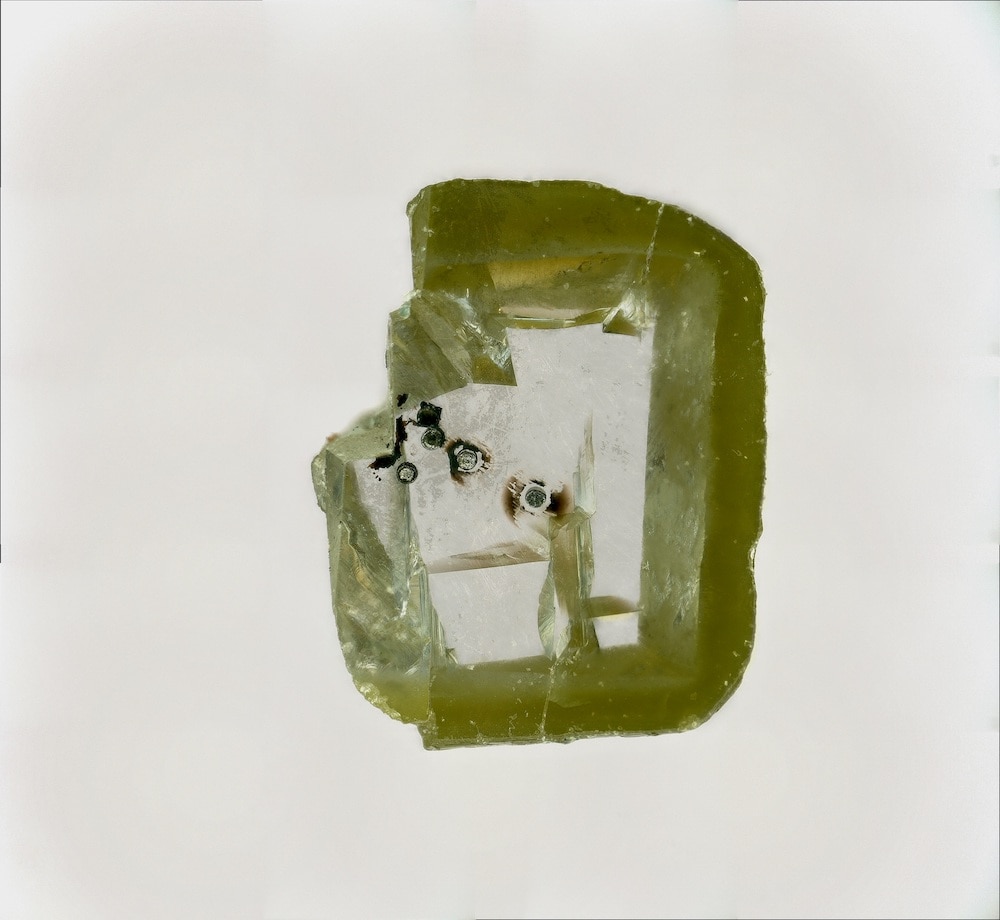Create a free profile to get unlimited access to exclusive videos, sweepstakes, and more!
New Infinity Stone unlocked! Scientists find new mineral inside a diamond deep within Earth’s mantle
It was inevitable.

The surface of the Earth is awash with rocks filled with all manner of minerals. From the talc in your baby powder to the salt in your dinner, minerals are all around us. Dissolved minerals travel with water and deposit elsewhere. Metamorphic minerals form under high heat and pressure then, once they reach the surface, transform into something else, stable under surface conditions.
Many of those deep-earth metamorphic minerals have never been observed in nature, because the conditions under which they form only happen deep beneath the surface of the world, and their transformations into something else happen long before we ever get a chance to glimpse them.
Still, science gives us a window into what the secret world beneath the surface must look like, and what sorts of minerals exist there. Scientists are able to duplicate some of those conditions in a laboratory to gain insight into what must be forming in the Earth’s mantle far beyond our field of view, but confirming the existence of those theoretical minerals would require a science fiction style magma submarine. Or just a really rare diamond discovery.
A recent study by Oliver Tschauner from the Department of Geoscience at the University of Nevada, and colleagues, describes just such a diamond. Their findings were published in the journal Science.
The diamond came from a mine in Orapa, Botswana and holds within it the first observed example of CaSiO3-perovskite ever seen in nature. Scientists believed such a mineral should exist under high pressure deep beneath the surface — they’ve been able to synthesize them in a lab for decades — but could only observe it naturally under these unique circumstances.
“In the 1960s it was predicted that silicates will assume this kind of structure at high pressures,” Tschauner told SYFY WIRE. “Nowadays we have better techniques to synthesize it in a rock. You can take a typical mantle rock composition, expose it to the pressures and temperatures of the lower mantel and see how much comes out.”
Inside what appears on the surface to be an ordinary diamond are trapped deposits of deep-earth minerals, including CaSiO3-perovskite. Scientists named the mineral davemaoite, after Dave (Ho-kwang) Mao, director of the Center for High Pressure Science and Technology Advanced Research, for contributions to the field of deep-mantle geophysics.
Calcium silicate does form at the surface and is found in metamorphic rocks. Likewise, perovskite structures also exist under surface conditions but are made of other materials. What makes the find unique is the calcium silicate in a perovskite phase, which can only happen under immense pressures and temperatures, the type which only occur at least 660 kilometers (some 410 miles) beneath the surface in the mantle.
“At that depth pressure is about 24 or 25 GPa, depending on the temperature. Then we’ve found that some would be between 660 and 900 kilometers. That would be about 35 gigapascals, 350,000 times the atmospheric pressure,” Tschauner said.
That the CaSiO3-perovskite formed as an inclusion inside a diamond means that the conditions of its formation were complicated, involving several other materials all bound together in a high-pressure, high-temperature environment. In fact, davemaoite wasn’t the only stowaway scientists found.
“There are two possibilities. Either there was carbonate that was reduced to elemental carbon, which at those pressures is diamond, or it was carbon dissolved in iron that was oxidized. We see in the same diamond inclusions of ice-VII. That’s a high-pressure form of water ice. You have this conjunction of carbon, water, and davemaoite, then the diamond grew and encapsulated them,” Tschauner said.
Once at the surface, scientists examined the contents of the diamond using several types of spectroscopy. First, they utilized a synchrotron to shoot X-rays at the diamond. The X-ray beam excites secondary X-rays in the material, allowing them to see anything with a sufficiently high energy. This process painted some of the picture, but didn’t have high enough resolution to confirm the presence of silicon or oxygen.
To get that level of data, the team used a laser focused at the site of the davemaoite. You can see the results of those laser blasts in the presence of scorch marks on the surface of the diamond. The laser vaporizes material as it drills into the diamond, leaving a layer of graphite on its surface. Those vaporized materials are then captured and placed into an argon plasma before being run through a mass spectrometer. These processes combined confirmed the presence of calcium-silicate in a perovskite structure.
This discovery adds one more unique gem in our chaos emerald collection, but there are still many more to discover. “The past 20 years we’ve made quite some progress in finding high-pressure minerals, but it’s mostly coming from meteorites or impact sites. There’s still quite a number of extant minerals that we believe to be important in nature, but have not found so far,” Tschauner said.
The search continues, and in the absence of impacts from outer space (which we’d probably all like to avoid), when it comes to locating deep-pressure minerals, diamonds are a scientists’ best friend.


























